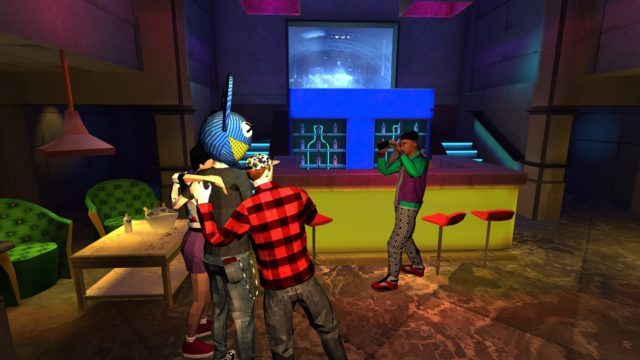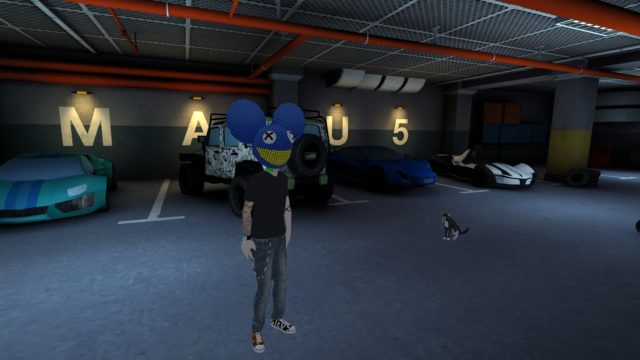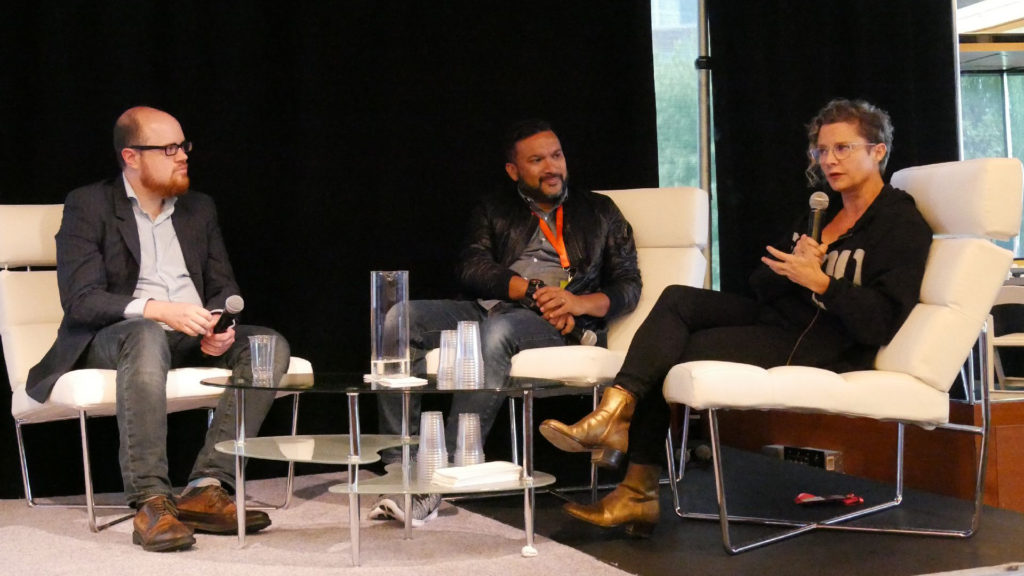As brands are increasingly becoming media owners, companies are looking for creative ways to engage with audiences. Different approaches were discussed by Afdhel Aziz, director of Absolut Labs, and Joy Howard, chief marketing officer at Sonos, at a panel presented at the New York Media Festival on Wednesday.
Although the brands are very different, the two panelists spoke about their approaches in working with musicians to create memorable experiences. Aziz spoke about Absolut’s long history of finding “ways to allow artists to connect with their fans using whatever canvas was available.” Whether that canvas was advertising, making documentaries (as was the case with Jay-Z), it was always designed to help the artists do something they were never able to before and connect with their fans.
“The thing that has changed from then to now is the technology,” said Aziz. “What that technology has given us is the ability for brands to collaborate with artists and reach their fans in a way that that doesn’t need to involve a traditional media network . . . now there are wayside which you can do something at scale that connect with millions people cheaper than ever, farther than ever, and in cooler ways than ever.”
Absolut has begun using virtual reality technology for content, with artists providing the creative spark to make the experience better. The most prominent experience is the Absolut deadmau5 app, which was created in collaboration with the musician.

Sonos, with products that have been recently made available in Apple Stores, has been experimenting with retail experiences. The experience Sonos offers focuses on listening to music out loud. What the experience needs to do is reach people and help them understand the value of what Sonos offers, and why it’s a great way to listen to music together.
“People are most likely to adopt Sonos if they listen to it at a friend’s house,” said Howard. “So we really wanted to recreate the experience of listening to music out loud together.”
Sonos has hosted radio broadcasts from the store and “first listen” events with artists releasing new albums, such as De La Soul. The company has also experimented with live events that are enhanced with music, such as gathering people together around food and hosting yoga classes in the store with the music turned up.
Absolut is working to go beyond plain brand integration with music tours by growing its partnerships. The company’s first experiments featured a small band for a VR livestream. It gave away Google Cardboard viewers and there were over 600 viewing parties hosted across the US. All participants had a front row seat to the show, and the average viewing time was 19 minutes.
“It goes back to that communal experience,” said Aziz. “It’s people getting together to listen to music in a space and experience music in an immersive, intense and intimate way.” However, scaling live events is problematic because you need hundreds of thousands of viewers for it to be worthwhile, limiting you to events with with near universal appeal.
“The pivot moment was: we’re a nightlife brand. We’re about people going out,” said Aziz. “Why don’t we partner with an amazing music artist and follow him or her for a night?”
That’s what led to the partnership with deadmau5, who also happened to be an avid gamer. It was his idea to transform the experience into a VR game. “What we got was this thing that was part video game, part VR and part music video where you get to control him (deadmau5) on a night out,” said Aziz.

In-game branding was very subtle, with buildings and shadows in the shape of Absolut bottles. Aziz stated that you don’t have to hit people over the head with branding, since “they’re playing a called Absolut deadmau5.”
When discussing about using technology to grow an audience, Aziz stated that 60 percent of Absolut drinkers are over 40. The company has to shift things so there is a new generation of Absolut fans.
“When you look at some of this technology,” said Aziz, “it can really move the needle by creating new channels to communicate with people through a device that everybody has and give them a really immersive brand experience that deepens their affinity and advocacy for the brand.”
When asked about going beyond sponsorship promotions, like having a popular artist promote the product on Twitter, Howard said: “One of the first things I learned early in my career was how to spot a really bad idea. One of the ways that you can spot a bad idea is that it has a celebrity in it. If someone pitches an idea and it depends on a celebrity, you should suspect it as a bad idea.
“The insight behind that is that you can paper over a lot of good ideas with celebrity and with glamour. But a really good idea should be powerful regardless of the celebrity cache of the artist involved.”
Howard further elaborated by saying that a straightforward sponsorship is something with which both brands and artists should be uncomfortable with. When it’s very transactional, and you’re putting the brand in the place of what any other brand could be, then you’re doing something that “in some ways, cheapens not only your brand, but also dilutes the equity of the artist.”
Howard suggests that the way to work instead is to do things that are truly collaborative, useful and contribute to culture. “The age of interruption is over,” she said. “You can’t interrupt people anymore. You’ve got to earn their attention. You’ve got to earn their engagement.”
Forming partnerships with artists relied on a shared set of core values, according to Howard. One of the most important values is wanting to help people listen to music better. So any space where music is important and listening matters is a space for Sonos to come in and elevate the experience.
One area includes music stores. Howard explained that people still go to record stores, even though the experience is generally uncomfortable. There is something positive in discovering music in a communal setting, even though it’s not always easy. To help address the matter, Sonos partnered with Rough Trade to build a listening room, where customers can enjoy a quality experience. Sonos took things further, with encouragement from Airbnb, by designing the space as a bedroom. Users can even rent the room for a night through Airbnb.
Howard advised principles such as “be useful,” and to “own, don’t rent.” Brands should invest in ideas that can travel. Don’t just rent a sponsorship or something that’s transactional. Pragmatic aspects involve reach. “You can create a really great experience in a tiny record store in Brooklyn, but then only people there will know about it,” she said. You amplify the experience so that it has long reach primarily by being relevant and doing something people care about.
“I think people should not be afraid to do things that are really relevant to their business,” said Howard. “Everyone is interested in marketing, everyone is in business nowadays. For us, it’s very natural to work with other business people to improve their retail experience. When an experience is relevant, people care about it.”
Relevance also relates to the impact a brand has on the world. “What are the behaviors that you’re encouraging?” Howard asks. “What are the activities you’re encouraging people to take that, at the end of the day, are not just more clutter?”

